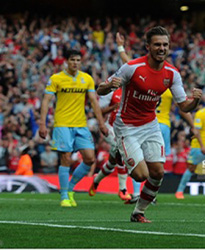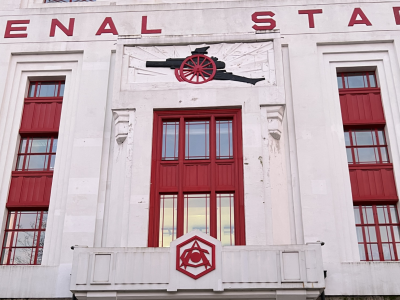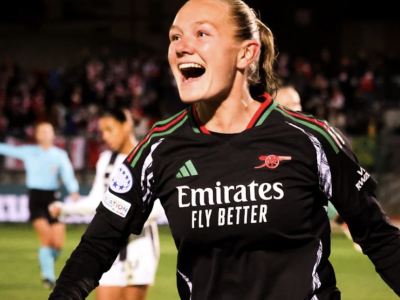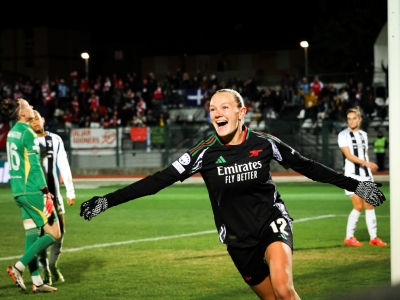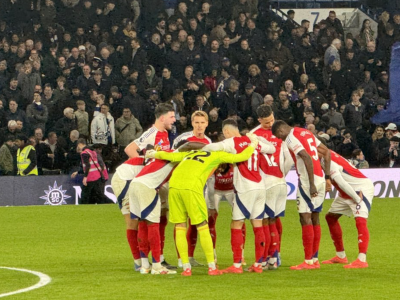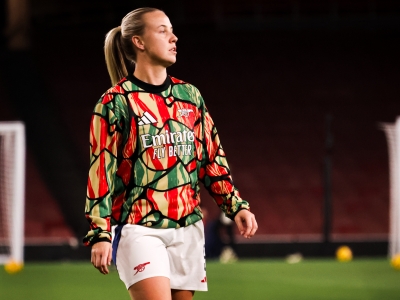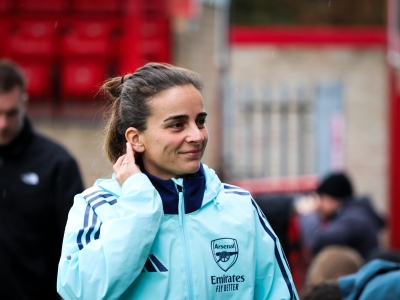Previous flashbacks for Palace away can be found here and here, while yesterday’s edition can be found here.
Bert Head fell out of favour with the Palace board for failing to raise the South London side from their perennial position of teetering above the relegation zone. His successor Malcolm Allison however would oversee two relegations on the bounce at Palace, as the South London side (who around this time were re-branded from the Glaziers to their current nickname of the Eagles) finished in twentieth position, that season losing to runaway Second tier champions Middlesbrough 2-3 at Selhurst Park in September 1973.
While in the third tier in 1975/76 however, the Eagles embarked on an FA Cup run and one week ahead of a Fifth Round away trip to Chelsea, their 3-3 draw with Swindon Town in the old Third Division would feature on LWT’s ‘The Big Match’. Palace spent three seasons in the old third tier before achieving promotion under Allison’s successor Terry Venables, in his the first season in his first managerial role with an exciting young team with players such as Vince Hilare, followed here by a Thames Television documentary at the time.
Around this period, Crystal Palace would also develop an enduring rivalry with a side which plays at the other end of the M23 – Brighton and Hove Albion. Two seasons later, Palace would be promoted to the top tier again, enjoying a 3-1 win over their rivals Brighton, as well as a 1-0 win away at Orient on the final Saturday of the season, which the following Friday they pipped rivals Brighton to the Second tier title in 1978/79 by just one point. Palace were unbeaten for their first nine games back in the top flight, the highlight of which had been topping the table at the end of September after three wins on the bounce – a 2-0 home win over Aston Villa, a 2-1 away win at Stoke and an impressive 4-1 home win over Bobby Robson’s Ipswich Town at Selhurst Park.
The run finally ended in early October with a 1-4 defeat to Southampton at the Dell, however Palace were back to winning ways with a 2-0 win over a Manchester City side which had Malcolm Allison back at the helm. In December came a 1-0 win to reigning European Champions Brian Clough’s Nottingham Forest, which meant that Palace went to Anfield in December in third place just three points behind League leaders Liverpool. The Scousers however inflicted a 0-3 defeat on Palace. However by the time of Palace’s first visit to Highbury in seven years, the Eagles had sunk to eighth position. The two sides played out a 1-1 draw, with Liam Brady on the scoresheet for Arsenal. Palace finished their first season back in in the old First Division in thirteenth position.
Crystal Palace had a much less enjoyable season in 1980/81, with Terry Venables leaving Selhurst Park in October with Palace sitting at the foot of the table. West Brom left Selhurst Park that month inflicting a 0-1 defeat on Palace, with Ron Atkinson here building his second career in the media by incredibly summarizing for LWT’s ‘The Big Match’ from the touchline as the game goes on. Palace were still bottom when fifth placed Man United visited Selhurst Park at the start of November. A stunning curl however from future Arsenal signing Peter Nicholas gave Palace a much needed 1-0 win, though by the end of that month, Palace played out a 2-3 defeat with the blue half of Manchester at Selhurst Park.
City had sacked Malcolm Allison earlier on in the season and with the managerial seat vacant at Selhurst Park, Palace moved to install Big Malc as their new boss. His first game ended in Palace’s biggest win of the season, a 4-1 victory over Norwich at Selhurst Park. By Christmas time however, Palace would lose 2-3 away to rivals Brighton and Hove Albion. Palace spent most of 1980/81 at the foot of the table and a 0-1 defeat to Man United away at Old Trafford in early April saw the Eagles relegated to the Second tier with five games left to play, one of which would be a visit to Highbury two weeks later.
On the stroke of half time, Palace took the lead through a goal from former Arsenal midfielder David Price, returning for his first game at Highbury since the Gunners sold him to Palace a month earlier in exchange for Peter Nicholas. The Gunners however equalised through a Brian Talbot goal. A goal from former Chelsea star Tommy Langley put Palace back in the lead again, however goals for Paul Davis and Willie Young gave Arsenal their first win over Palace for eight years. Palace finished the season rock bottom of the table and sixteen points adrift of safety and would spend the next eight seasons outside of the top tier – the first four of which in the bottom half of the old Second Division, with a 3-4 defeat to Wolves in November 1982 caught by the Match of the Day cameras.
Crystal Palace would be managed around the time by their former nemesis at Brighton, Alan Mullery. In a piece for Thames News during the 1983/84 season however on an in form Vince Hilare would be an eye opener for race relations at the time, in which Mullery would actually describe Vince as ‘a lovely lad’ with a ‘nice suntan’ and the Thames reporter asking him if he ‘felt responsible for other blacks’ coming through at the time (words which may not be overly offensive on the face of it, but certainly cringe-inducingly clumsy in their use!). Fortunes for Palace however changed on the appointment of former Man United winger Steve Coppell at the age of just 28 years and 10 months in June 1984.
Coppell had been forced to quit the game just eight months earlier due to a knee injury which kept him out of the 1983 FA Cup Final with Man United. Palace spent four seasons in the top half of the old Second Division with impressive results such as a 3-1 win against Leeds United away at Elland Road in November 1985 and a 6-0 win away at St. Andrews against Birmingham City. Palace came up via the play offs in 1988/89, along the way beating their old rivals Brighton 2-1 at Selhurst Park – a game which includes a cracker from Ian Wright @02.05 and the incredible awarding of five penalties, four which of which were for Palace and three of them missed!
In their first season back in the top flight Palace would face South London rivals Millwall in Late October. Millwall, in their second season in the top flight, actually topped the table a month earlier as they were unbeaten in their first five games, of which they won three. Palace however pulled off a 4-3 win over the Lions at Selhurst Park. Palace’s first visit to Highbury in nine years came on New Years’ Day 1990. The Gunners had lost their previous two games over Christmas away at Southampton on Boxing Day and Aston Villa two days prior. Arsenal however took all three points with a 4-1 win over Palace with goals from Lee Dixon, Tony Adams and two for Alan Smith, while on target for Palace would be the familiar name of Alan Pardew.
Crystal Palace finished five points above relegation in fifteenth position, though on level points with Man United two positions above them who they would meet in that season’s FA Cup Final. Palace would reach as far as the Semi Finals without meeting top tier opposition, beating Portsmouth 2-0 in the third round, Hudddersfield 4-0 in the fourth round, Rochdale 1-0 in the fifth round and 1-0 win away to Cambridge United in the Quarter Finals. Palace would memorably beat Liverpool in the Semi Final, but lose to Man United after a replay for Alex Ferguson’s first major trophy in England. Despite tasting defeat, the experience would hold Palace in good stead the following season.
Palace’s 1990/91 season got off to a flying start with a 2-1 win over Chelsea at Selhurst Park in August. By Christmas, Palace were one point behind an Arsenal side penalised with a two point deduction, after a 2-0 win over Man City with a comedy own goal from Neil Pointon and one for Ian Wright. In the FA Cup, Palace drew Brian Clough’s Nottingham Forest in a tie which went to three games (one of the last to do so before the introduction of penalty shoot outs after the first replay the following season). In the replay at the City Ground, the two sides played out a 2-2 draw with a late equaliser from John Salako from all of forty yards. Palace lost the second replay 0-3 at the City Ground a week later however.
Palace held firm in third place throughout the whole of the second half of the 1990/91 season and in mid-February came within two points of Arsenal in second place, though having played one more game than the Gunners as the Eagles visited Highbury for that season’s fixture. Two weeks earlier, Arsenal lost their first game of the season, though twenty four hours prior to kick off Kenny Dalglish shocked the football world by handing in his resignation with league leaders Liverpool. Arsenal opened the scoring with a rare goal from David O’Leary. An error from Palace’s Eric ‘Ninja’ Young put Paul Merson through, to put Arsenal two up ahead of half time.
Meanwhile, the Highbury electronic scoreboard had been relaying the Liverpool score back from Kennilworth Road against Luton Town as the goals went in. A second half collapse for the manager-less Scousers (who crashed 3-1 to Luton) meant that an Arsenal win would take them top on goal difference. Into the second half, a confident Arsenal side extended their lead further with a brilliant strike from Alan Smith from outside of the area put the Gunners three up. Arsenal’s scoring would be rounded off when Nigel Martyn failed to hold a Nigel Winterburn cross, with Kevin Campbell pouncing on the loose ball to give Arsenal a 4-0 win over Palace and Pole position in the race for the title, which was duly delivered in May.
A good season for Palace however would be marked with a 4-1 win over Everton in the final of the ZDS Cup at Wembley in early April. Palace also sealed third place and a 3-0 win over a Man United side four days ahead of their appearance in the European Cup Winners Cup Final (which they went on to win). Their 1990/91 finish was Palace’s best of all-time, though sadly not enough to qualify for European football, due to the lack of UEFA co-efficient rankings resulting from English football’s post-Heysel ban from European competition, meaning that only runners up Liverpool could play in the UEFA Cup.
1990/91 would also be the zenith of Crystal Palace’s glory years under Steve Coppell, especially after the loss of Ian Wright, who signed for the Gunners in September 1991. Palace’s visit to Highbury in early April 1992 saw Arsenal bag four goals again at home to the Eagles for the third year in a row. Palace however took the lead with a goal from current Wales boss Chris Coleman. Ian Wright however would be playing his first game against Palace since the switch seven months earlier. There would be no goal for Wright, however he laid on Arsenal’s equaliser by Paul Merson. Arsenal took the lead with an excellent chip by Merse later in the first half.
Another superb goal followed soon after, as Kevin Campbell played a one-two with Ian Wright, for Campbell to smash in on a left-footed volley from twenty yards out. Into the second half, Merson scored in front of the North Bank to seal his first hat-trick for Arsenal. A 4-1 win over Palace would stretch Arsenal’s unbeaten run to thirteen games, putting them fourth in the table. Arsenal remained unbeaten for the rest of the season, though were ultimately trophy-less and a fourth place finish didn’t a guarantee the ‘trophy’ of a place in Europe. In 1992/93, Arsenal would meet Crystal Palace in the Semi Final of the League Cup on their dual carriageway to Wembley, carrying a 3-1 lead from the first leg courtesy of two goals for Ian Wright.
The Second leg at Highbury in early March saw goals from Andy Linighan and Ian Wright secure a 2-0 win on the night and a 5-1 win over Palace on aggregate, to meet Sheffield Wednesday in the final at Wembley one month later. Arsenal won the League Cup and were due to meet Sheffield Wednesday again in the FA Cup Final. One week ahead of the final, Arsenal were to meet Crystal Palace on the final Saturday of the inaugural Premiership season. Arsenal couldn’t improve on a mid-table finish in the League, while Crystal Palace were in grave danger of a Premiership exit as they were three points ahead of the drop zone and whose goal difference had only been two goals better than Oldham in twentieth position.
A defeat for Oldham at home to Southampton would have meant that Palace would have been safe regardless. Ian Wright opened the scoring for the Gunners and Palace went in at half time one goal down. Despite this, spontaneous cheers from the Palace away support indicated that events at Oldham’s Boundary Park suggested that the Eagles might be safe. However, in the era prior to mobile phones and the internet, it seems that the Palace fans were in receipt of inaccurate information and at half time it was announced that Oldham were in fact 2-1 up. As it stood however, Palace would still be safe by one goal.

